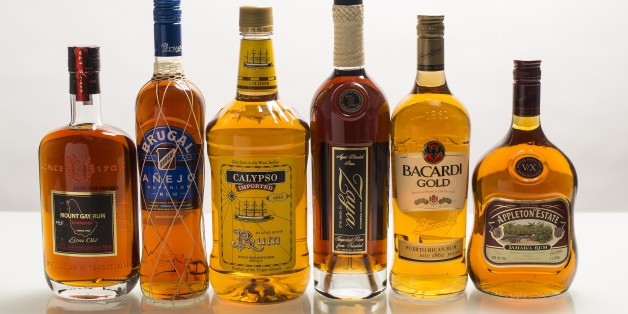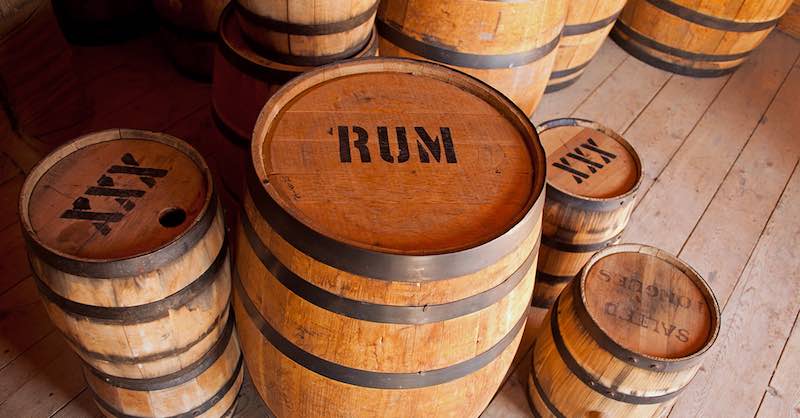Rum and Casks – The Importance of Rum in Whisky
What is it with rums, anyway? Whisky drinkers may or may not like rums for its sweet notes. However, rums are popular amongst many, and it is understandably so. Whisky makers are also increasingly using rum casks to age whisky to capitalise on the sweet notes that rums are famous for.
What is Rum?
Rum is made from either sugarcane juice or sugarcane by-products such as molasses through a process of fermentation, distillation and ageing in oak barrels. The method of making rums is similar to whisky; the difference is in the ingredients. Most of the world’s most famous rums are from the Caribbeans and Latin America. However, there are many other countries which produce rums, such as Japan, New Zealand, Spain, South Africa, Taiwan, and the United Kingdom.
Rums have different grades. Typically, there are three grades of rums, light (white) rums, dark rums and spiced rums. They are consumed or used in different ways depending on the style that they are made. For example, dark rums are usually consumed on the rocks, or neat, or in a cocktail. Light rums are commonly only used in cocktails, but in modern times, some premium light rums are also drunk on the rocks.
Rum has connections in the maritime industry as it was used as a form of medicine in the past for the armies as well as the pirates.
Rum Grades
While there are typically three grades to categorise rums, the grades and variations in describing rum dependents largely on the location of its origins. These are some of the most frequently used terms to describe rums.
- Dark Rums: These are identified by their colour, usually in brown, black or dark red. Made from caramelised sugar or molasses, they are generally aged longer in heavily charred oak barrels. The production methods give these rums stronger flavours of molasses or caramel together with a hint of spice. They provide the strong characteristics of rum in cocktails and are also used for cooking. Most dark rums come from Jamaica, Haiti and Martinique.
- Gold Rums: Also known as “amber rums”, these are medium-bodied rums. They do not age as long as dark rums but still retains the strong flavours of an aged rum. It is midway between dark rums and light rums.
- Light Rums: Also referred to as “silver” or “white” rums, they have very little flavours besides some sweetness. Light rums are sometimes filtered after ageing to remove their colouring. The milder tastes of light rum are perfect for cocktails, even though their lighter colour and flavours are not used in rum-based drinks. Most of the light rums come from Puerto Rico.
- Spiced Rums: Spiced rums are processed rums with spices and sometimes caramel. Most spiced rums are processed gold rums. The more affordable brands could be made of white rums with the addition of caramel and spices. Some of the spices used in these rums are rosemary, aniseed, cinnamon, cloves, pepper and cardamon.
Other Types of Rum Categories
There are also other varieties of rums that are lesser known, such as the flavoured rums and premium rums.
Flavoured rums are fruits-infused liquid and generally less than 40% abv. They are used for flavouring in cocktails and sometimes, drunk on their own.
Premium rums are a class above the rest of the rum categories. Similarly to premium whiskies, boutique brands craft them with more flavours and characters. They are generally consumed neat or on the rocks.
Rum’s Production Methods
The production methods differ widely in the rum industry. The traditional styles of a particular locale determine the production method. Nonetheless, rum is made through a similar process as whisky. Rum producers also ferment the basic ingredients – molasses or sugar cane juice using yeast and water before distillation and ageing.
Molasses, the by-product of sugar cane, is the most common ingredient used to make rum. Some producers use sugar cane juice, notably from the French-speaking islands in the Caribbean. A rum’s quality is highly dependent on the quality and the variety of the sugar cane used. In turn, the quality of sugar cane is dependent on the soil and climate it grows in. Therefore, it is usual for rums to differ widely in quality in different places of origins.
Fermentation
Molasses (or sugar cane juice), yeast and water are the three ingredients for fermentation to take place. There is variation in the yeast used as well. Some producers use wild yeast, but most of them use a particular strain of yeast to ensure a consistent taste and stable fermentation time. The yeast used is essential as it will determine the final flavour and aroma profile. Lighter rums use quick yeast while the more flavourful ones tend to use yeast that is slower.
Distillation
There is no standard distillation method. Some producers who make small batch rums use pot stills while most producers use column stills for distillation. The only difference between pot stills and column stills distillation is that pot stills create fuller flavoured rums.
Ageing and Blending
Interestingly, most rum-making countries require producers to age their new-make rums for at least one year. The ageing is done in a charred, ex-bourbon oak barrel or a stainless steel tank. The ageing process gives rum its colour. It becomes dark when aged in an oak cask and remains colourless if aged in stainless steel tanks.
Due to the warm climates in most rum-making countries, rum matures much faster than whisky. The angels’ share of rum is also higher. It goes up to as much as 10% in tropical countries!
The final step in rum-making is to blend the rums for consistent flavours before bottling. Parts of this blending process include filtering light rums to remove the colour taken from oak casks and adding caramel to adjust the hue of dark rums.
Rum and Whisky
It appears that rum and whisky have nothing in common when you first started reading, but it turns out that they have a lot in common. While the production methods differ, the general idea of fermentation, distillation, ageing and vatting (blending in the case of rum) is similar. In a modern world where traditional sherry casks are getting more expensive, it is no surprise that whisky makers are turning to other alternatives such as port casks, rum casks and wine casks for whisky maturation.
Rum casks infused a sweet overtone to the whisky and gave a robust body to it. We enjoyed some rum cask-finished whiskies, like the Glenfiddich 21 years old. If you love rums as much as you love whisky, be sure to give them equal attention as whisky makers who use rum cask for their ageing depend on you to drink more rum!




